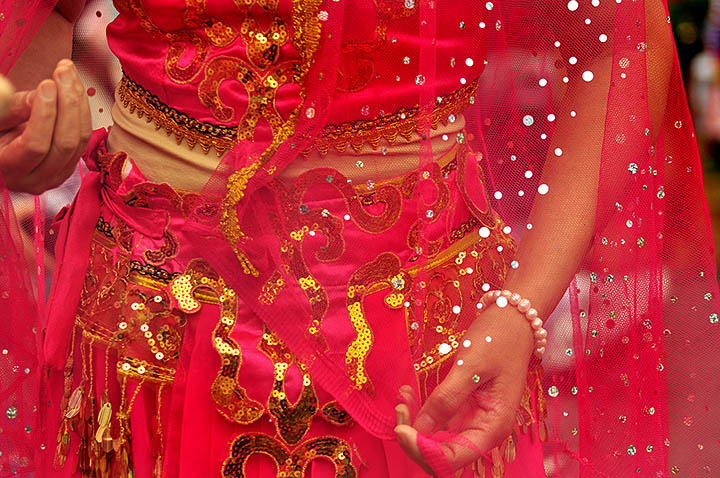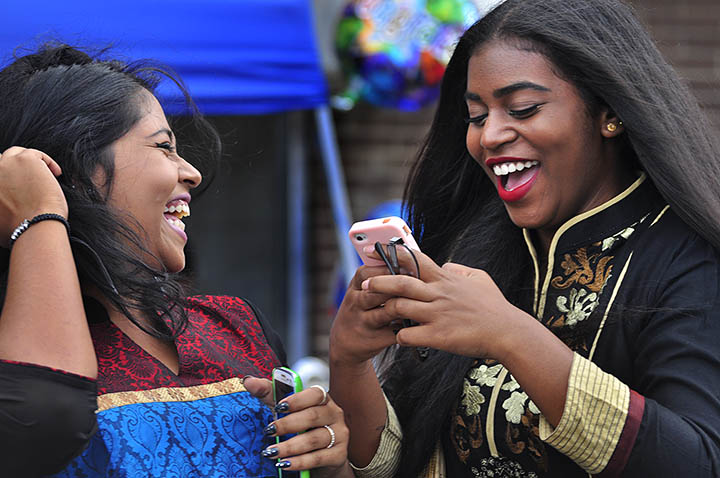These images are of the third annual Prio Bangla festival, a gathering celebrating Bangladeshi community and culture, held along Columbia Pike again this year.
It featured a colorful range of Bangladeshi performers, foods, goods, and arts, and also highlighted other local ethnic communities' cultural and folk expressions.
Photography by Duy Tran.
Friday, September 26, 2014
Virginia Foundation for the Humanities - "This is What Peace Looks Like " / Article on CPDP and Living Diversity
By David Bearinger
If you want to experience the most
highly concentrated tincture of ethnic and cultural diversity in Virginia, walk
the three-and-a-half-mile stretch of State Route 244 that runs through
Arlington from the Fairfax line east to the Pentagon.
Over the past dozen years, Lloyd
Wolf, Paula Endo, Mimi Xang Ho, Duy Tran, Aleksandra Lagkueva, and
the other photographers in the Columbia Pike Documentary Project have walked
this road for thousands of hours, observing and photographing it, looking into
its multicultural face, studying the polyglot language of its soul.
Wolf says this part of Virginia
represents “what America has become and is becoming … and perhaps the face of
the world too … this is what Peace looks like.”
SR 244, now known as Columbia Pike
and before that as the Washington Gravel Turnpike, was conceived by an act of
Congress in 1810 and later built on top of an existing cow path. The first
section was paved in 1928.
As late as the 1960s, “the Pike”
and the neighborhoods bordering it was still a largely white, middleclass
enclave. It has since become a mecca for new immigrants from every part of the
world.
The change began in the 1970s with
the end of the war in Southeast Asia, when refugees from Vietnam, Laos, and
Cambodia altered the face of the Pike dramatically. Large numbers of Latinos
stated arriving in the 1980s, followed in the ’90s by refugees and immigrants
from East Asia and the Middle East. Today, the communities of the Pike include
people from Sudan and South Sudan, Somalia, Ethiopia, Eritrea, Pakistan, Mongolia,
El Salvador, Guatemala, Bolivia, Ukraine, Egypt, Azerbaijan … the list goes on.
What happened along Columbia Pike is a harbinger, some say; a window into the future of America. But another change is coming too. The end has not been written yet, but the forces of redevelopment—gentrification, as it’s sometimes called—are swiftly transforming the cultural landscape of this place.
For now, and for perhaps a little while longer, the Pike remains one of the most ethnically and culturally diverse nodes on the planet, and much of the built landscape here still looks pretty much the way it did in 1959 or 1972.
But you can also sense the fragility of these visual connections to the past and of the diversity that has defined the soul of Columbia Pike for more than forty years. You can see it in the new apartment buildings, the upscale restaurants and shopping complexes that are springing up everywhere.
It may not be long, in other words, before one of the most immigrant-rich places in the country—The World in a Zip Code, according to a 2001 report by the Brookings Institution—can’t sustain this level of diversity anymore, or any longer be like the fertile delta in a vast river-system of migration, a place where all the cultures of the world flow together and where—Wolf’s words again—“the diversity kinda works.”
The arc of VFH engagement with the Columbia Pike Documentary Project began in 2002 with a grant to support publication of a book called Portraits from the Pike. It continued with a series of grants made between 2007 and 2009 to the Urban Alternatives Foundation and the Columbia Pike Revitalization Organization.
These grants supported more photo-documentation and interviews with Pike residents, leading up to an exhibit and public forum on the Pike’s future, held in celebration of its 200th anniversary in 2010. Meanwhile, the face of the Pike community continued to change, and the documentation work has continued, right up to the present day.
In August 2014, VFH began a long-term, statewide effort to explore the nature of community, tradition, family, and personal identity through the lens of food. The Food & Community project was launched in Arlington, not far from the Pike, and more than half the participants in the launch event were first-generation immigrants. Several had been involved in documenting the Pike community since the days of Portraits from the Pike.
It’s fair to say that this focus on Food & Community has been inspired, in part, by Columbia Pike and by the diversity of immigrant cultures concentrated there. The same is true of another VFH-sponsored effort—a partnership with Arlington County Public Schools—to engage local teachers and the Arlington community in a focused exploration of Latino immigration in the United States. A new book, Living Diversity, will soon showcase the fruits of the Columbia Pike Documentary Project to the world.
Change is coming to Columbia Pike once again. But in the meantime, it throbs with life, showing Virginia and the rest of the world how the challenges of diversity in twenty-first century can be met.
Subscribe to:
Comments (Atom)




































